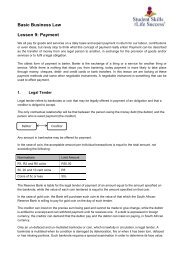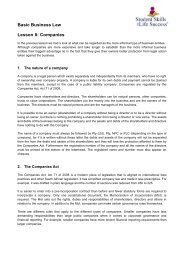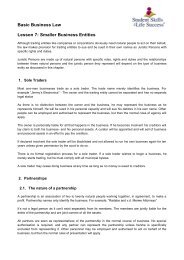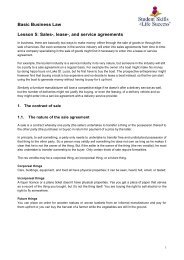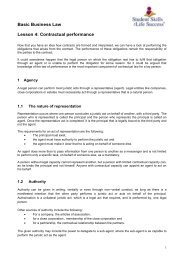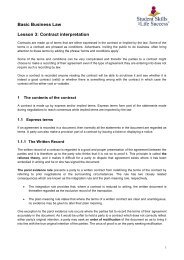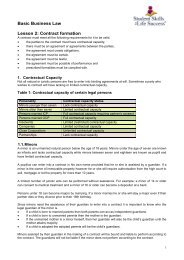Purchasing and Financing 2024
Purchasing- and Financial Management For 2nd year CATS learners. Aligned to the outcomes of the German accredited certification: “Industrie Kaufmann/frau”.
Purchasing- and Financial Management
For 2nd year CATS learners.
Aligned to the outcomes of the German accredited certification: “Industrie Kaufmann/frau”.
You also want an ePaper? Increase the reach of your titles
YUMPU automatically turns print PDFs into web optimized ePapers that Google loves.
production line close. Similarly, a retailer or wholesaler can lose sales quickly if popular<br />
products are not on the shelf.<br />
On the other h<strong>and</strong>, keeping too much inventory is expensive. Firms now pay more<br />
attention to inventory costs - <strong>and</strong> look to their suppliers for help in controlling them. This<br />
often means that a supplier must be able to provide just-in-time (JIT) delivery - reliably<br />
getting products there just before the customer needs them.<br />
Just-in-time relationships between buyers <strong>and</strong> sellers require a lot of coordination <strong>and</strong><br />
may increase the supplier's costs. Most buyers realize they can't just push costs back onto<br />
their suppliers without giving them something in return. Often what they give is a longerterm<br />
contract that shares both the costs <strong>and</strong> benefits of the working partnership.<br />
A key advantage of JIT for business customers is that it reduces their physical distribution<br />
(PD) costs - especially storing <strong>and</strong> h<strong>and</strong>ling costs. However, if the customer doesn't have<br />
any backup inventory, there's no "security blanket" if something goes wrong.<br />
If a supplier's delivery truck gets stuck in traffic, if there's an error in what's shipped, or if<br />
there are any quality problems when the products arrive, the customer's business stops.<br />
Thus, a JIT system requires that a supplier have extremely high-quality control in<br />
production <strong>and</strong> in every PD activity, including its PD service.<br />
To control the risk of transportation problems, JIT suppliers often locate their facilities<br />
close to important customers. Trucks may make smaller <strong>and</strong> more frequent deliveries -<br />
perhaps even several times a day. As this suggests, a JIT system usually requires a supplier<br />
to be able to respond to very short order lead-times.<br />
The JIT system shifts greater responsibility for PD activities backward in the channel - to<br />
suppliers. If the supplier can be more efficient than the customer could be in controlling<br />
PD costs - <strong>and</strong> still provide the customer with the service level required - this approach<br />
can work well for everyone in the channel. However, it should be clear that JIT is not<br />
always the lowest cost - or best - approach. It may be better for a supplier to produce <strong>and</strong><br />
ship in larger, more economical quantities - if the savings offset the distribution system's<br />
total inventory <strong>and</strong> h<strong>and</strong>ling costs.<br />
The just-in-time approach focuses attention on the need to coordinate the PD system<br />
throughout the channel. It also highlights the value of close working relationships <strong>and</strong><br />
effective communication. Whether or not a firm uses the JIT approach, good information<br />
is often the key to coordinating PD activities.<br />
12









